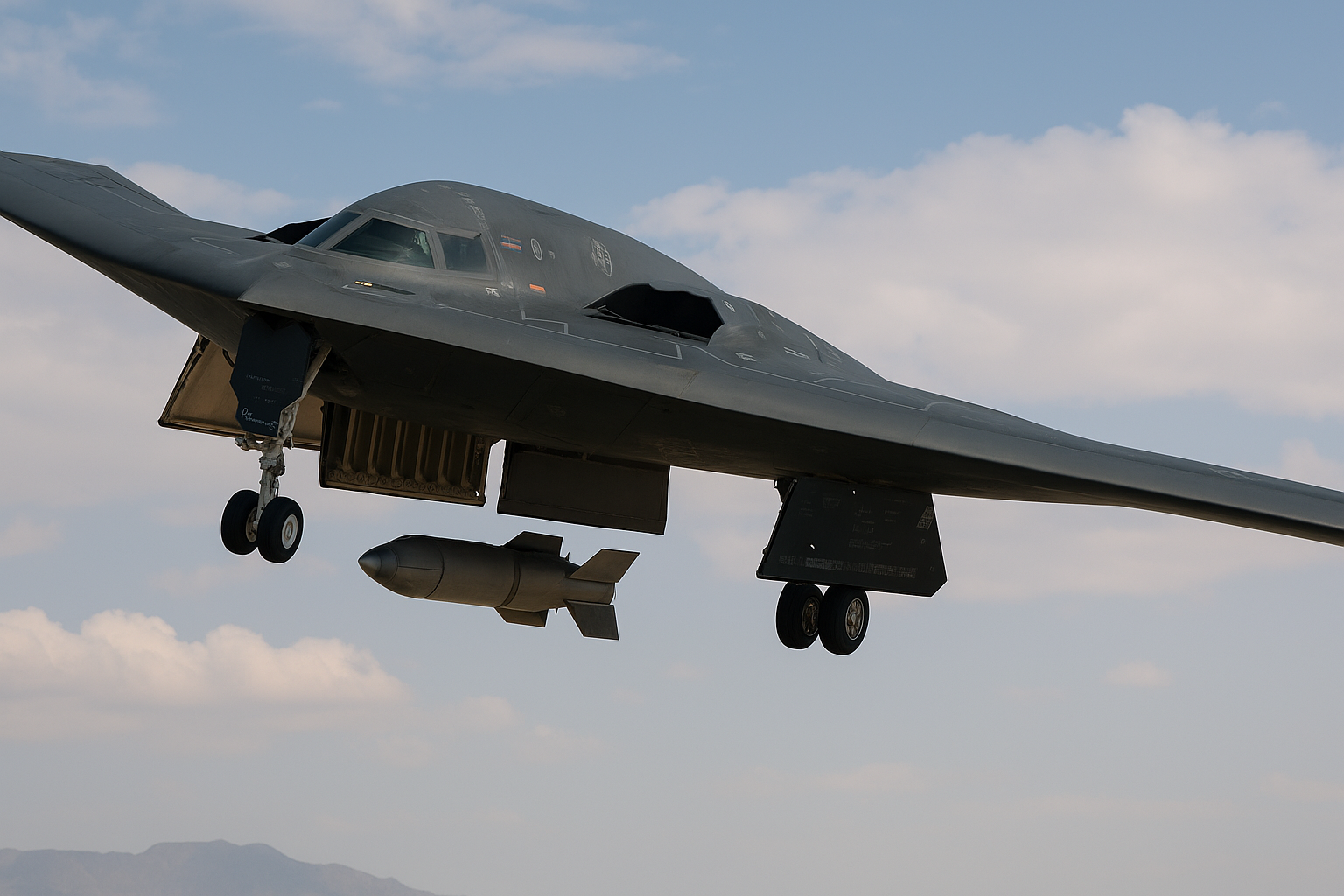In a major military operation that shocked the international community, the United States executed a high-level airstrike on Iran’s nuclear infrastructure in the early hours of June 22. The mission, known internally as Operation Midnight Hammer, targeted three of Iran’s most strategic nuclear facilities using stealth bombers and precision-guided munitions.
Targets and Execution
The operation focused on the Fordow enrichment plant, the Natanz facility, and the Isfahan nuclear center. These sites are considered central to Iran’s uranium enrichment and nuclear research. According to official reports, multiple B-2 stealth bombers flew from the United States under radio silence and dropped specialized bunker-busting bombs designed to penetrate underground facilities.
Additional support came from U.S. naval forces, which launched Tomahawk missiles from submarines stationed in the region. In total, over 120 aircraft were involved, including fighter escorts, refueling jets, and intelligence support units.
Strategic Objectives
U.S. officials clarified that the goal was not regime change but to neutralize what they described as an imminent nuclear threat. The Pentagon emphasized the need to act decisively following weeks of intelligence that suggested Iran was preparing to accelerate its nuclear program.
Initial assessments suggest heavy damage to all three sites. However, analysts caution that a full picture will only emerge in the coming days as satellite images and on-the-ground intelligence become available.
Global Response
The global reaction was swift and divided. Some allies praised the precision and strategic timing of the strike, calling it a bold act of deterrence. Others warned that the move could provoke a wider regional conflict.
Iran condemned the attack and vowed retaliation. Several Iranian military commanders have already signaled intentions to target U.S. assets in the Gulf region. Meanwhile, emergency meetings are being held at the United Nations as diplomatic efforts intensify to prevent escalation.
Market Implications
The geopolitical shock is expected to affect multiple sectors. Oil prices are likely to rise due to concerns over disruption in the Persian Gulf and potential closure of the Strait of Hormuz. Defense and energy stocks may see short-term volatility. Bitcoin and other decentralized assets could attract attention as alternative hedges in case of further instability.
Strategic Outlook
Operation Midnight Hammer marks a turning point. It demonstrates that the United States is willing to act unilaterally to neutralize perceived threats. While the military execution was precise, the political consequences remain uncertain.
Investors should remain alert. The situation may evolve quickly. In moments like this, understanding geopolitical dynamics becomes as important as reading charts.







